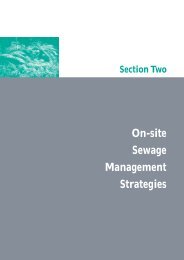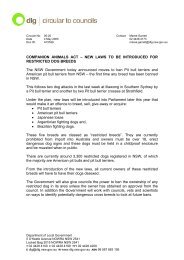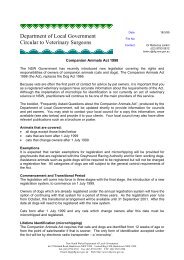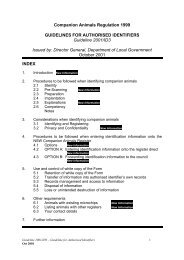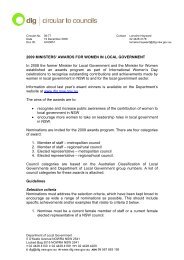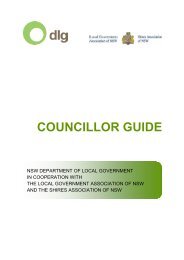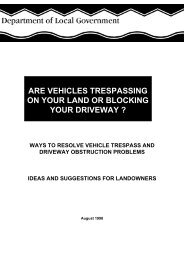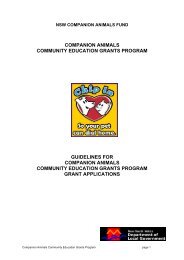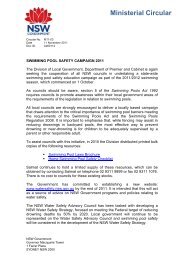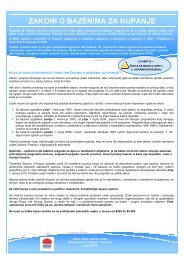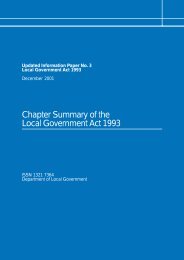Integrated Planning and Reporting Manual - Division of Local ...
Integrated Planning and Reporting Manual - Division of Local ...
Integrated Planning and Reporting Manual - Division of Local ...
Create successful ePaper yourself
Turn your PDF publications into a flip-book with our unique Google optimized e-Paper software.
3. THE RESOURCING STRATEGY<br />
Condition as it relates to both structural <strong>and</strong> functional adequacy should be assessed. For large<br />
bridge structures, it may be necessary to divide the structure into sections for assessment,<br />
especially if the design type, type <strong>of</strong> condition, or the structure varies along its length.<br />
Urban stormwater drainage<br />
The urban stormwater drainage network will need to be carefully surveyed to ascertain its condition<br />
levels. Due to the nature <strong>of</strong> the main underground drainage network commonly in place in urban<br />
areas, it is likely that any one <strong>of</strong> the five condition levels recommended may apply. However, without<br />
substantial effort being put into a survey <strong>of</strong> underground drains, it may be difficult to ascertain which<br />
condition level is appropriate.<br />
For drainage assets other than underground drains, condition should be readily assessed from<br />
visual inspection.<br />
Risk assessment <strong>and</strong> management<br />
Every council is exposed to considerable political, managerial <strong>and</strong> financial risks due to their scale<br />
<strong>of</strong> investment in infrastructure assets. The type <strong>of</strong> risk events that might impact on assets include:<br />
<br />
<br />
<br />
natural events, for example, bushfires<br />
external impacts, for example, power supply failures<br />
operational <strong>and</strong> physical failure risks.<br />
Through effective asset management planning, a council is better able to manage these risks,<br />
sustain business continuity <strong>and</strong> obtain better value for money in the delivery <strong>of</strong> services to the<br />
community.<br />
A council’s Asset Management Plan should therefore incorporate an assessment <strong>of</strong> the risks<br />
associated with the assets involved <strong>and</strong> the identification <strong>of</strong> strategies for the management <strong>of</strong> those<br />
risks. The strategies should be consistent with the overall risk policy <strong>of</strong> Council. The International<br />
<strong>and</strong> Australian St<strong>and</strong>ard AS/NZS/ISO/31000:2009 – Risk management – Principles <strong>and</strong> guidelines<br />
provides a useful guide.<br />
Lifecycle costs<br />
Costs occur in all phases <strong>of</strong> an asset’s life. It is important to attribute the costs to each phase <strong>of</strong> an<br />
asset’s lifecycle so that the total lifecycle costs can be determined to enable better management<br />
decision-making.<br />
There are four key phases <strong>of</strong> the asset management lifecycle <strong>of</strong> a council’s assets, namely:<br />
acquisition, operation <strong>and</strong> maintenance, renewal, <strong>and</strong> disposal.<br />
Acquisition<br />
Operation <strong>and</strong><br />
maintenance<br />
Disposal<br />
Renewal<br />
<strong>Planning</strong> & <strong>Reporting</strong> <strong>Manual</strong> Page 78 <strong>of</strong> 115



